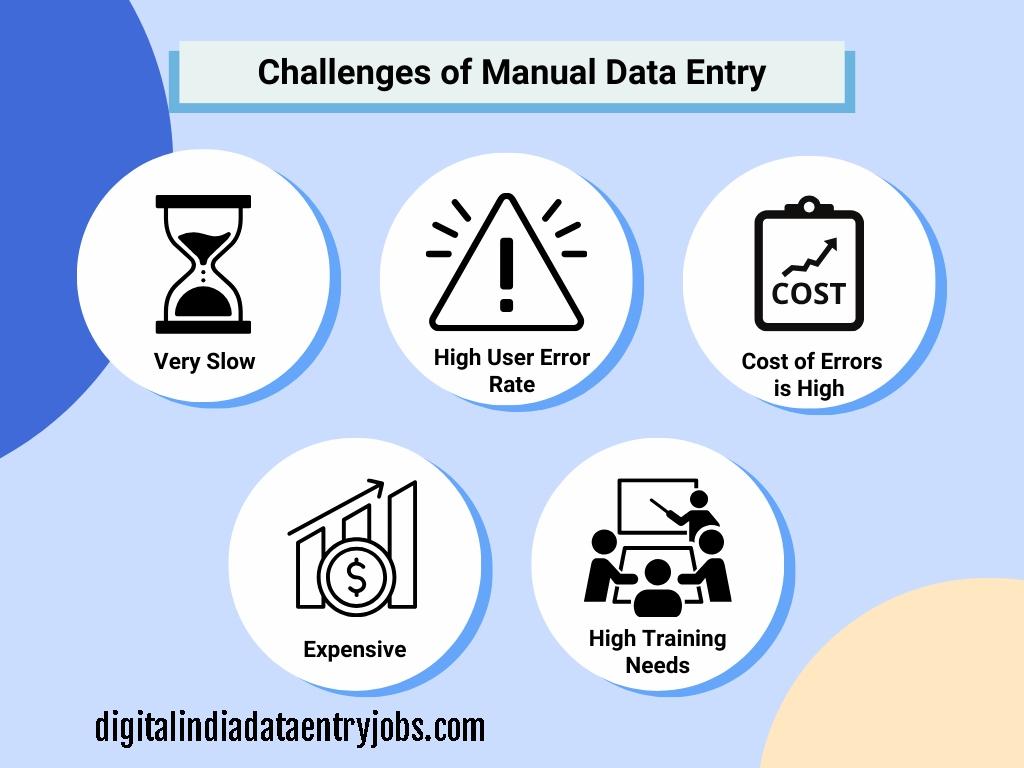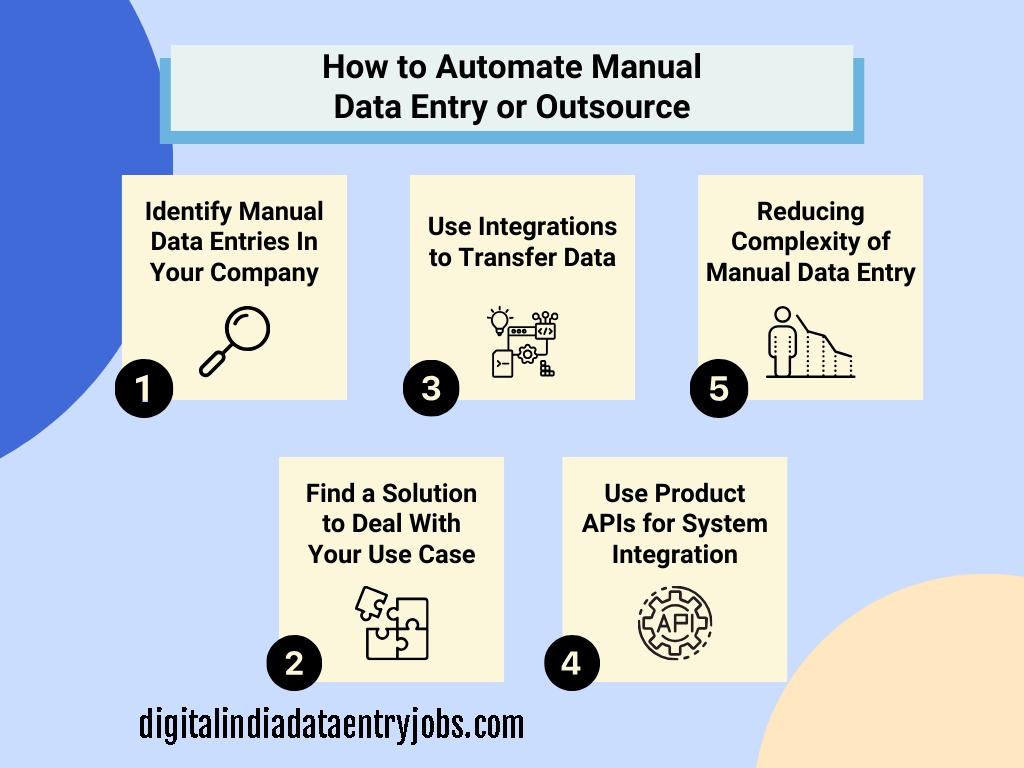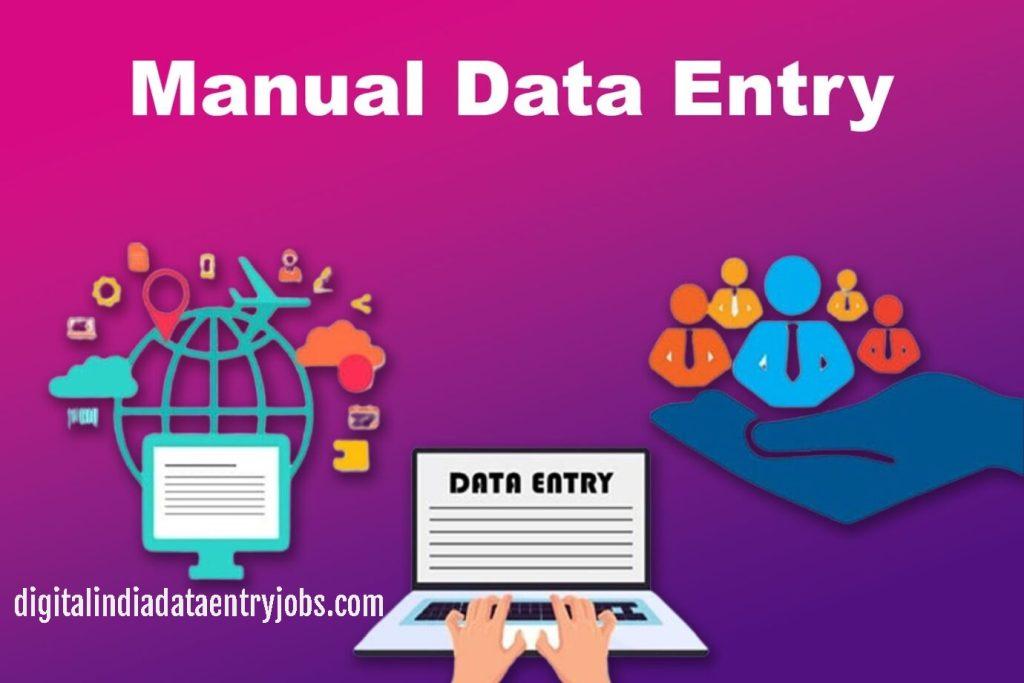Manual Data Entry:- For businesses in a variety of sectors, including education, healthcare, law, real estate, architecture, restaurants, fashion, and many more, manual data entry is an important daily task.
Nowadays, a lot of businesses use manual data entry as an automated procedure.
Now let’s discuss why you should stop using manual data entry.
Contents
What Is Manual Data Entry?
Manual Data entry is a centuries-old method of recording data for storage and replication, often carried out by a data enter operator.
The work is so easy to complete that it takes very little effort to complete. However, one of the reasons these jobs have significant turnover rates is the repetitious nature of the work. Even yet, a lot of businesses have managed to avoid sacrificing productivity in the course of using this data entry method. Businesses work with outsourcing providers to assign qualified data entry specialists to their projects.
Outsourcing providers of data entry services finish laborious jobs without compromising the efficiency of their employees.
A data entry specialist can type between 50 and 80 words per minute on average. Because of their fast typing, businesses that outsource data entry can quickly enter a lot of data.
Also Read:- Remote Jobs Data Entry, indnewsupdates.com, Nebsit Council

Challenges of Manual Data Entry
The method that has been employed from the beginning of information processing is manual data entry. To transfer and organize data, institutions, and businesses frequently hire a large number of workers who are solely skilled in data entry.
The following are the primary difficulties that many people have come to understand when utilizing manual data entry in information processing:
Slow & Time Consuming
It’s just incredibly slow. Over 40% of workers reported that data entry and repetitive duties take up 25% of their workweek. When working full-time, the only thing that takes up two days is converting one data form to another.
High User Error Rate
Tiny errors occur in manual data entering roughly 1% of the time. Nonetheless, a study revealed that the error rate in laboratory testing was close to 4%, with over 14% of these errors being significant and potentially dangerous.
Errors are more likely to occur while working with computations or big data sets. Error correction in large data sets is a difficult task that might result in more errors if not done with the appropriate efficiency and expertise.
The Cost of Errors is High
As previously indicated, mistakes in massive data sets can propagate over the entire dataset, impacting process efficiency and leading to subpar client service. In the end, this can result in clients or customers who never come back.
Correcting errors can also take longer than expected when it comes to the workflow’s standard operating procedure.
A single decimal place boosted the amount sent in a single money transfer tenfold in one Irish environment. The transaction increased from €200.00 to €20,000.00, and because of banking regulations, it became irreversible.
Expensive
It frequently takes a team, not just one person, to process a data set. The salary range for manual data entry employees varies depending on skill level and level of analysis.
Although the highest-paid individuals in this area earned $53,000 annually, effective operations require multiple personnel. Businesses that primarily rely on data entry personnel find it difficult to grow due to this high expense, particularly if they have tight budgets.
High Training Needs
Even while the tasks in certain data entry jobs are essentially repetitive, they nonetheless call for a keen eye for detail and a thorough understanding of the program, format, and industry. Accounting data entry clerks need to be trained in accounting language and procedures in order to process the information that is provided to them.
There is no set amount of money that should be allocated to employee training, but it always involves paying for time spent while the employee is still learning and not yet concentrating on the primary responsibilities. To prepare them can take longer than three months.
Why Do Businesses Still Enter Data by Hand?
Businesses nevertheless enter data by hand for a number of reasons, even if it can result in a loss of revenue. Among these explanations are the following:
- Sensitive Information: More care and trust are typically required when handling sensitive information than what technology can provide. Regulations pertaining to data management are stringent in sectors such as healthcare and banking and often forbid automated or cloud-based systems.
- Extremely Specialised Niches: Some businesses are so specialized that technology would not be able to replace the complex cognitive processes and decision-making abilities of humans.
- Absence of Automated Solutions: In certain cases, the only practical option available is human data input because there might not be an automated solution that meets the particular requirements or level of complexity of the work involved.
- Loyal Workers: Because companies cherish their personnel, they may decide to retain devoted workers in manual data entry positions in recognition of their commitment and commitment over the years.
Also Read:- Data Entry Remote Jobs Part Time, Companycontactdetail, Uidaionlineaadharcard

How to Outsource or Automate Manual Data Entry
Modern technology makes it possible to automate manual data entry, avoiding all the difficulties, expenses, and time commitments associated with it.
There are two approaches to handle this: either employ expensive software or contract out data entry to save costs.
1: Identify Manual Data Entries In Your Company
Make a list of all the jobs that now require manual data entry and start there. To determine the extent of automation or outsourcing required, ascertain the volume, frequency, and nature of these tasks.
Without thoroughly examining every aspect of the organization’s workflow, you are unable to assess the level of automation that is required.
2: Find a Reliable Solution to Deal With Your Use Case
After you’ve determined which areas need work, look into software or outsourced providers that can meet your particular requirements. Seek out solutions with a track record of success in your sector or for the particular kind of data entry work you do.
In the bookkeeping profession, for instance, converting bank statements is one area where data entry is necessary. It is usually necessary to type bank and credit card statements into an accounting program or spreadsheet because they are in paper or PDF format.
Using OCR to convert bank statements is one method of automating data entry for bookkeeping. These converters, such as DocuClipper, make use of an OCR-powered cloud-based program to extract data from bank statements.
The data is available in editable CSV or XLS formats for accountants and bookkeepers.
3: Use Integrations to Transfer Data
The ability to integrate with other platforms is a feature of many contemporary software programs. This lowers the possibility of error and saves time by enabling automatic data transfer between systems without the need for manual re-entry.
Automated bookkeeping procedures also depend on accounting software with interchangeable file formats, such as QBO, a Quickbooks variant that may be obtained from DocuClipper PDF statements.
4: Use Product APIs to Integrate With Your Systems
Use product APIs (Application Programming Interfaces) for a more streamlined and personalized automation procedure.
Through the use of APIs, many software systems can speak with one another directly, facilitating automated data interchange that works flawlessly with your current workflows.
There are many APIs available for use in accounting procedures, each with advantages and disadvantages. There are these options available to you:
- QuickBooks Online
- Zoho Books
- NetSuite
- Sage Accounting
- Xero Payroll
- Ramp
- Tipalti API
5: Reduce the Complexity of Manual Data Entry
Start by automating or outsourcing the most difficult and time-consuming operations to streamline the data entry process.
This method not only produces benefits more quickly, but it also enables you to learn from your mistakes and modify your approach as you automate more tasks.
You can still change the scope of the data you wish to gather, though. Although they might not be relevant right now, they can be helpful in marketing, customer service, operations, and many other areas when you’re seeking to evaluate the data from a different angle.
When Manual Data Entry Is the Only Option
Despite technological developments, there are occasions where manual data entry remains the only practical solution. The following are some scenarios in which manual data entry may be required:
- Different Document Formats: Manual entry guarantees reliable data capture when documents arrive in different formats that automated solutions are unable to reliably recognize or process.
- Unstructured or Complex Data: Predictably structured data might be a challenge for automated systems to handle. Intricate tables, handwritten notes, and non-standardized forms could need human interpretation and data entry.
- Quality Control and Error Correction: Correcting errors and inconsistencies in data processed by automated systems through manual data entry can be a quality control tool in situations when accuracy is crucial.
- Sensitive or Confidential Information: In order to protect data privacy and security, manual data entry may be desirable when managing extremely sensitive or confidential documents, particularly in situations where automated methods may increase the danger of data breaches.
- Customized Data Entry Requirements: OCR restrictions may prevent automated solutions from meeting some industries’ or projects’ particular requirements without requiring extensive customization. In these situations, manual data entry offers the adaptability required to satisfy these particular requirements.

Also Read:- Data Entry Jobs Remote, Onlinereferjobs, Digitizeindiagov
Conclusion
The advancement of technology demands modifications to workflow configurations and the application of technologies that maintain businesses’ competitiveness. Businesses that want to concentrate on their core strengths—customer service, innovation, growth, and productivity—can benefit from the automation of data entry.
FAQs
Q.) How does automated data entry vary from manual data entry?
Ans. While automated data entry reduces manual labor and increases efficiency by using technology like OCR and software to capture and enter data, manual data entry requires entering data by hand.
Q.) What kinds of data processing are done by hand?
Ans. Examples include manually transcribing audio recordings, handwriting in ledgers, entering customer data into CRMs, and typing data from paper documents into databases.
Q.) What does manual data collection entail?
Ans. It entails manual information collection methods including filling out paper forms, conducting in-person surveys, manually capturing device readings, and collecting physical samples.
#Saras

